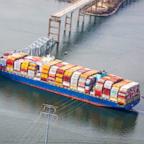Earth-like planet in Epsilon Eridani? It is logical, Captain
— -- Star Trek fans, take heart — Mr. Spock's fabled home star, the nearby Epsilon Eridani, could harbor an Earth-like planet.
NASA astronomers today report that the triple-ringed star has an asteroid belt and a Jupiter-like giant planet in roughly the same orbits as in our own solar system. Only 850 million years old, a fifth the age of Earth's sun, Epsilon Eridani resembles a younger twin to our solar system. About 62 trillion miles away, it is the closest known solar system.
It was borrowed by the creators of the TV series Star Trek as the location of Vulcan, the planet that gave us the super-logical science officer Mr. Spock.
"We certainly haven't seen it yet, but if its solar system is anything like ours, then there should be planets like ours," say astronomer Massimo Marengo of the Harvard-Smithsonian Center for Astrophysics in Cambridge, Mass.
The NASA Spitzer space telescope results, which measure the infrared heat given off by dust and ice rings circling the star, suggest Epsilon Eridani possesses three jumbo worlds, revealed by dust-free circular lanes in its asteroid belt and more distant comet belts.
The circular asteroid belt that, like ours, orbits within 300 million miles of the star is particularly surprising, Marengo says, because earlier studies had suggested the star's Jupiter-like planet followed a looping path that would have destroyed the narrow belt. Instead, it must follow a nearly circular orbit.
Because Epsilon Eridani is smaller, dimmer and younger than the sun, the "habitable zone" for Earth-like planets there is closer to the star, says planetary theorist Sean Raymond of the University of Colorado-Boulder. "An Earth-like planet could actually form in the (star's) habitable zone," he says, if the report of a well-behaved Jupiter-sized planet bears out. Another planetary theorist, Alan Boss of the Carnegie Institute of Washington (D.C.), is doubtful, suggesting such a planet is "likely to be too massive and too close to allow Earth-like planets to form in the habitable zone."




